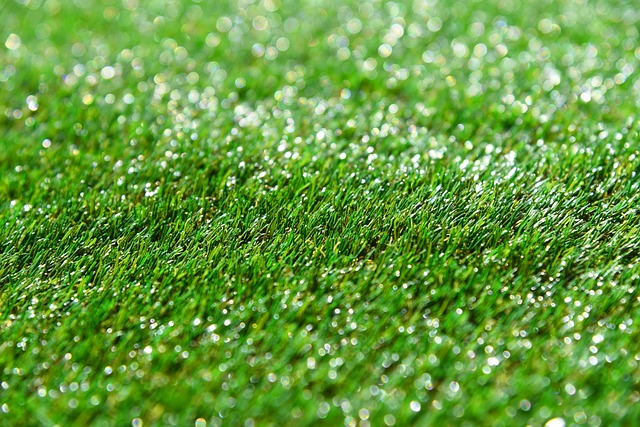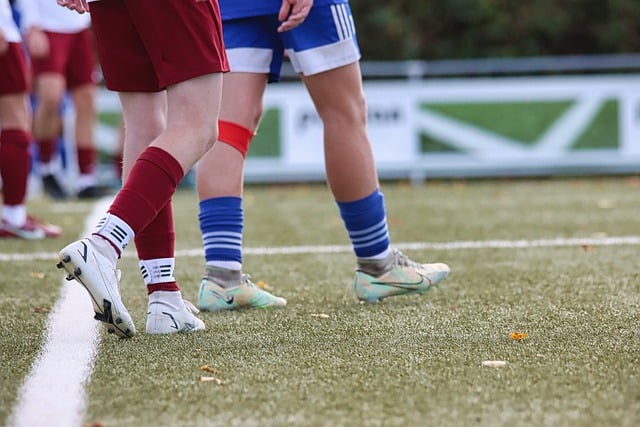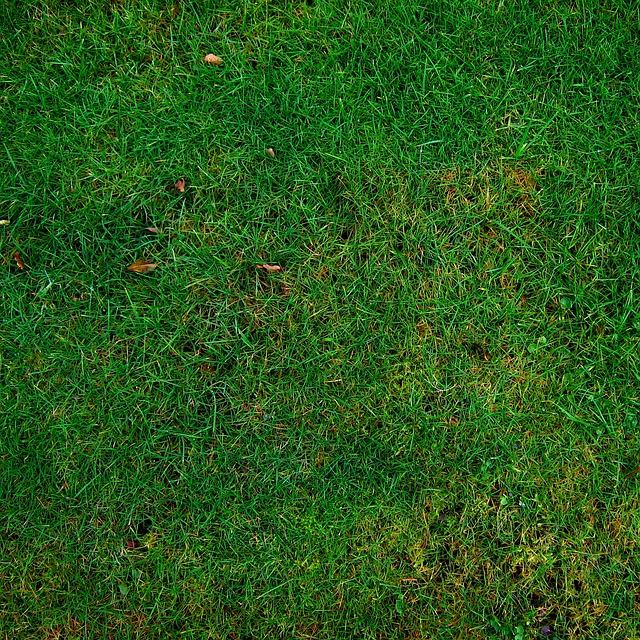Artificial grass offers a low-maintenance, pet-friendly alternative to natural grass, providing a consistently green surface that's easy to maintain. It's durable against pets' activities, resistant to muddy areas, and requires minimal watering and fertilization. High-quality turf ensures excellent drainage for efficient waste cleanup and hygiene. When selecting artificial grass for pets, prioritize non-toxic, wear-resistant fibers with antimicrobial properties to inhibit bacterial growth. A supportive backing that cushions falls and a cleanable surface are essential for safety and comfort. Regular maintenance, including the use of pet-safe disinfectants and enzymatic cleaners for accidents, is crucial for maintaining a clean and safe environment. The latest artificial grass technology incorporates these features with a focus on sustainability, offering an eco-friendly infill option that's safe for both pets and children. With proper installation and upkeep, artificial grass can provide a pet-safe, aesthetically pleasing solution to outdoor spaces.
When integrating pets into a home with artificial turf, pet owners face unique considerations to ensure their furry companions remain safe and content. This article delves into the advantages of artificial turf for pet owners and outlines essential factors when selecting this green alternative. We explore installation best practices that transform your outdoor space into a pet-friendly haven and share maintenance strategies that preserve its safety and cleanliness. Additionally, we examine advancements in materials and technologies that cater specifically to pet-safe artificial turf solutions. Whether you’re a dog or cat owner looking for a low-maintenance yet pet-compatible landscape, this guide provides comprehensive insights on making the right choice for your pets and your property.
- Understanding Artificial Turf for Pet Owners: Benefits and Considerations
- Selecting the Safest Artificial Grass Options for Your Furry Friends
- Installation Best Practices to Ensure a Pet-Friendly Artificial Turf Environment
- Maintenance Strategies for Keeping Your Pet's Artificial Turf Area Clean and Safe
- The Latest in Pet-Safe Artificial Turf Materials and Technologies
Understanding Artificial Turf for Pet Owners: Benefits and Considerations

For pet owners seeking a low-maintenance, durable solution for their outdoor spaces, artificial grass offers numerous advantages. Unlike natural grass, which can be challenging to maintain due to pets’ activities, artificial turf remains lush and green year-round with minimal upkeep. It provides a safe, clean play area for pets, minimizing muddy patches and eliminating the need for frequent watering or fertilization. Additionally, the drainage properties of high-quality artificial turf make it easier to clean pet waste, ensuring a sanitary environment and preserving the integrity of the turf over time.
When considering the installation of artificial turf for pets, some key factors should be taken into account. The choice of materials is crucial; opting for durable, non-toxic synthetic fibers that are resistant to wear and tear will ensure longevity. Furthermore, selecting an appropriate infill, such as sand or rubber, not only aids in drainage but also cushions your pet during play or rest, reducing the risk of injury from hard falls. Regularly cleaning the turf with a mild disinfectant can help maintain its appearance and hygiene, making it a responsible choice for pet-friendly spaces.
Selecting the Safest Artificial Grass Options for Your Furry Friends

When selecting artificial grass options that are safe for your pets, it’s crucial to prioritize materials that are non-toxic and durable. Artificial turf designed for pet-friendly spaces often features antimicrobial elements to prevent bacterial growth from pet waste. Additionally, choosing a turf with a dense pile can help minimize the risk of pesticides or other harmful chemicals seeping into your pet’s fur or skin. The best artificial grass for pets is one that has been tested and certified as lead-free, ensuring a safe play environment for your furry companions. Furthermore, opting for turf with a soft, resilient backing can protect against injury from falls or rough play, providing peace of mind for pet owners who want to maintain an active lifestyle with their animals outdoors. Regular maintenance, including thorough cleaning and occasional sanitization, will further ensure the artificial grass remains a safe and clean space for pets to enjoy.
Installation Best Practices to Ensure a Pet-Friendly Artificial Turf Environment

When installing pet-friendly artificial turf, it’s crucial to prioritize the health and safety of both pets and their owners. The choice of artificial grass should be non-toxic with a durable, soft surface that resists wear and tear from frequent use. A reputable manufacturer will offer products specifically designed for pet environments, featuring antimicrobial properties to inhibit bacterial growth. Proper drainage is also essential, as it ensures any pet waste can be easily cleaned up and the area remains sanitary. Additionally, choose an infill that is safe for pets; options like washed sand or rubber granules are preferable over rubber pulganilla, which can be harmful if ingested. Regular maintenance includes thorough cleaning with pet-safe disinfectants and periodic inspection of the turf for any damage that may occur over time, ensuring a continued safe and enjoyable environment for pets to play and owners to relax.
The installation process itself should adhere to best practices to maintain the integrity of the artificial turf system. This includes preparing a solid and level base to prevent shifting or sagging of the turf, which can lead to tripping hazards or damage to the substrate. The padding beneath the turf should be dense enough to provide cushioning but not so thick that it hinders drainage. After installation, secure the edges with galvanized staples or adhesive to prevent pet claws from causing unravelling or creating unsafe conditions. Regularly removing pet waste and cleaning the turf with appropriate cleaners will help maintain its appearance and longevity, ensuring a safe and inviting space for pets to roam and enjoy.
Maintenance Strategies for Keeping Your Pet's Artificial Turf Area Clean and Safe

Maintaining an artificial turf area that is safe and enjoyable for pets involves a combination of regular cleaning, monitoring for wear, and addressing any contamination promptly. To ensure your pet’s artificial grass remains hygienic and free from harmful bacteria or pests, routine cleaning is essential. Use a stiff-bristled broom or a leaf blower to remove surface debris, and spot clean any accidents with an enzymatic pet odor eliminator. For deeper cleansing, a gentle mixture of mild soap and water can be applied with a soft-bristled brush, ensuring you rinse thoroughly to avoid residue that could be harmful if ingested by pets.
In addition to regular cleaning, it’s important to inspect the turf frequently for any signs of wear or damage. Look out for areas where the fibers are matted or thinning, as these can cause discomfort to your pet or create a space for bacteria to thrive. Repairing these areas promptly with patch kits designed for artificial grass will maintain the integrity and safety of the turf. Additionally, consider installing a perimeter barrier around the turf to prevent the spread of waste and keep the area contained, making maintenance more manageable and the environment more pleasant for both pets and owners. Regular deodorization treatments can also help neutralize odors, ensuring a fresher environment that’s inviting for your pet to use and play.
The Latest in Pet-Safe Artificial Turf Materials and Technologies

Artificial grass technologies have advanced significantly in recent years, offering pet-friendly alternatives that prioritize safety and comfort for animals. Modern artificial turf is constructed with non-toxic, lead-free materials, ensuring that pets can enjoy a safe play area without the risk of ingesting harmful substances. The latest iterations incorporate antimicrobial agents into the fibers to prevent the growth of bacteria and fungi, maintaining hygienic conditions for pets. These advancements are particularly beneficial for pet owners who seek a low-maintenance yet durable surface that can withstand the wear and tear of pet activity, all while providing a realistic grass appearance and feel.
In addition to safety, pet-friendly artificial turf is designed with drainage systems that allow for quick water runoff and moisture management, reducing the potential for standing water where pests or pathogens could proliferate. The resilient backing of these turfs also prevents the migration of microplastics into the soil, safeguarding the environment and local ecosystems. Manufacturers are continuously innovating, introducing eco-friendly infill materials that are both pet and child safe, ensuring that both domestic animals and their human companions can coexist harmoniously on a clean, sustainable, and resilient surface.
Pet owners seeking a low-maintenance yet safe outdoor space for their furry companions will find that pet-friendly artificial turf offers a multitude of advantages. By selecting the right artificial grass option and ensuring proper installation and maintenance, you can provide a clean, hygienic, and durable environment for your pets to enjoy. The latest advancements in artificial turf materials and technologies have made these surfaces not only pet-safe but also environmentally friendly. For those prioritizing their pets’ well-being alongside an aesthetically pleasing and practical lawn solution, investing in high-quality artificial turf is a wise choice. With the right care and consideration, this green alternative can transform your outdoor space into a pet haven that stands the test of time and playful paws.
